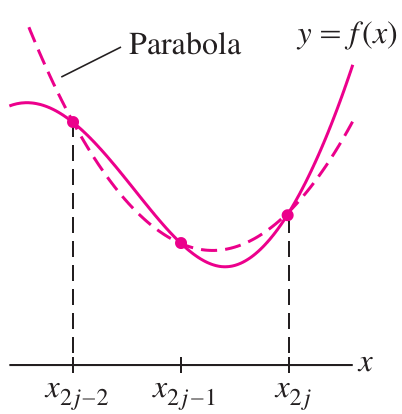Theory 1
The Trapezoid Rule is a technique to approximate the area under a curve as the sum of areas of thin trapezoids whose top corners lie on the curve.
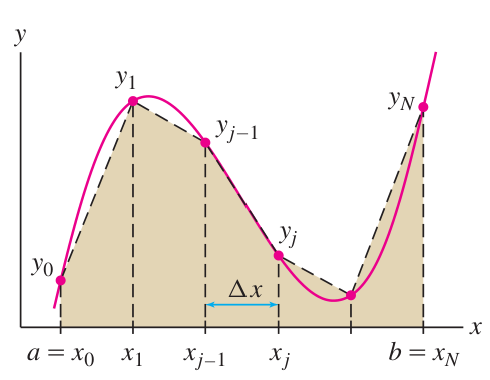 The tops of the trapezoids are lines that approximate the curve. They are determined as lines that agree with the curve at two points.
The tops of the trapezoids are lines that approximate the curve. They are determined as lines that agree with the curve at two points.
Trapezoid rule - area formula
Given a function
and a partition of the range labeled by (with and ), the Trapezoid Rule determines the area formula:
Notice the pattern in
Extra - Trapezoid rule - error bound
The error of the Trapezoid Rule approximation is bounded by this formula:
Here
is any number satisfying for .
The Midpoint Rule is a technique to approximate the area under a curve as the sum of areas of thin rectangles whose top midpoints lies on the curve.
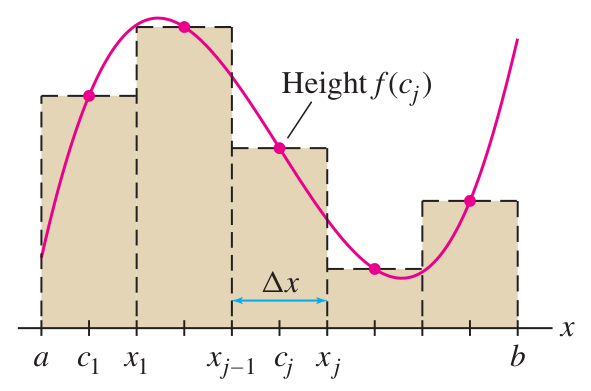
The very same formula also represents the areas of trapezoids whose top midpoints lie on the curve and whose top line is tangent to the curve:
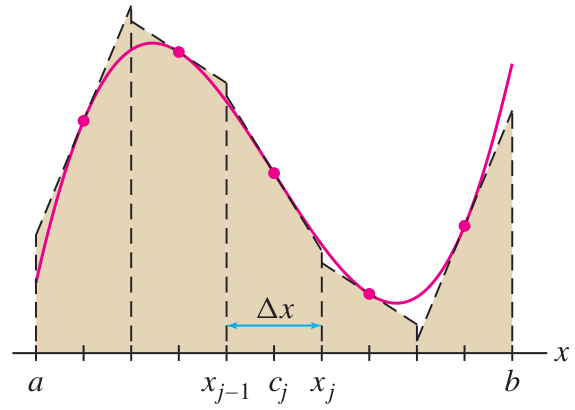
The reason they are equal is simple: when pivoting the top line on the ‘attached’ midpoint, the area of the trapezoid does not change.
Midpoint Rule - area formula
Given a function
and a partition of the range labeled by (with and ), the Midpoint Rule determines the area formula: Here each
is the midpoint of the interval . It can be given by the formula .
Extra - Midpoint Rule - error bound
The error of the Midpoint Rule approximation is bounded by this formula:
Here
is any number satisfying for .
Notice that
Theory 2
It turns out that the Midpoint Rule and the Trapezoid Rule tend to differ from the exact integral in opposite directions, and the Midpoint Rule tends to be twice as accurate. Therefore we may improve on both of them by constructing a weighted average of the formulas. This is called Simpson’s Rule.
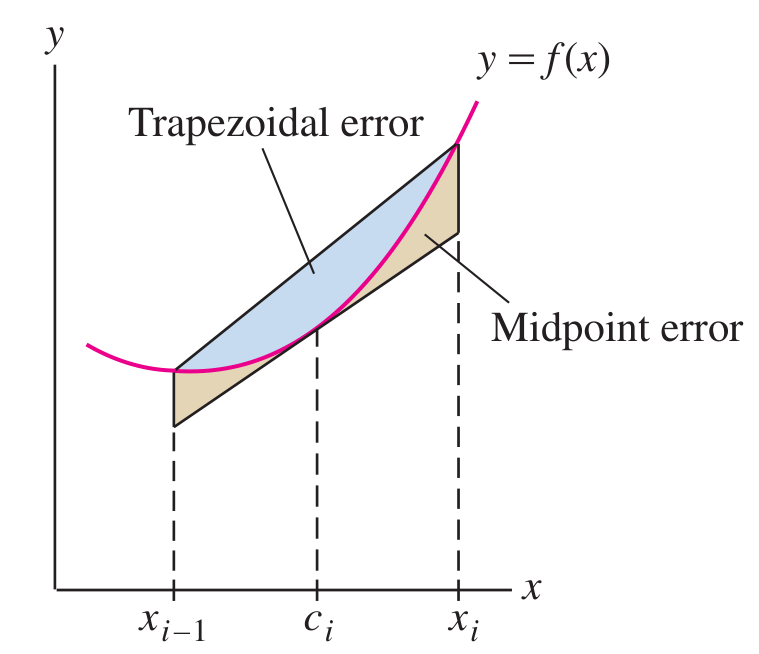
Simpson’s Rule - defining formula
Simpson’s Rule is given by the weighted sum of the Trapezoid and Midpoint Rules:
Simpson’s Rule - computing formula
Given a function
and a partition of the range labeled by (with and ), Simpson’s Rule determines the area formula:
Note the pattern for Simpson’s Rule: 1, 4, 2, 4, 2, 4, 2,
, 1
Simpson’s Rule - error bound
The error of Simpson’s Rule approximation is bounded by this formula:
Here
is any number satisfying for .
Simpson’s Rule
“Parabola Rule” The formula of Simpson’s Rule can also be explained or defined geometrically: it is the formula giving the sum of areas under small parabolas that meet the curve in three points.
There is a unique parabola passing through any three points with differing
-values: These may be pieced together to form an approximation to the curve:
The area under the parabola through
, , and is given by this formula: This formula may be verified using basic calculus (area under a parabola) and a lot of algebra. (Ambitious students should derive it.)
The area under the parabola through
, , and is given by a similar formula: The Simpson’s Rule formula is the sum of all these formulas! So the
s in Simpson’s come from duplication of endpoint terms as the “rectangular” regions are stacked end-to-end.
